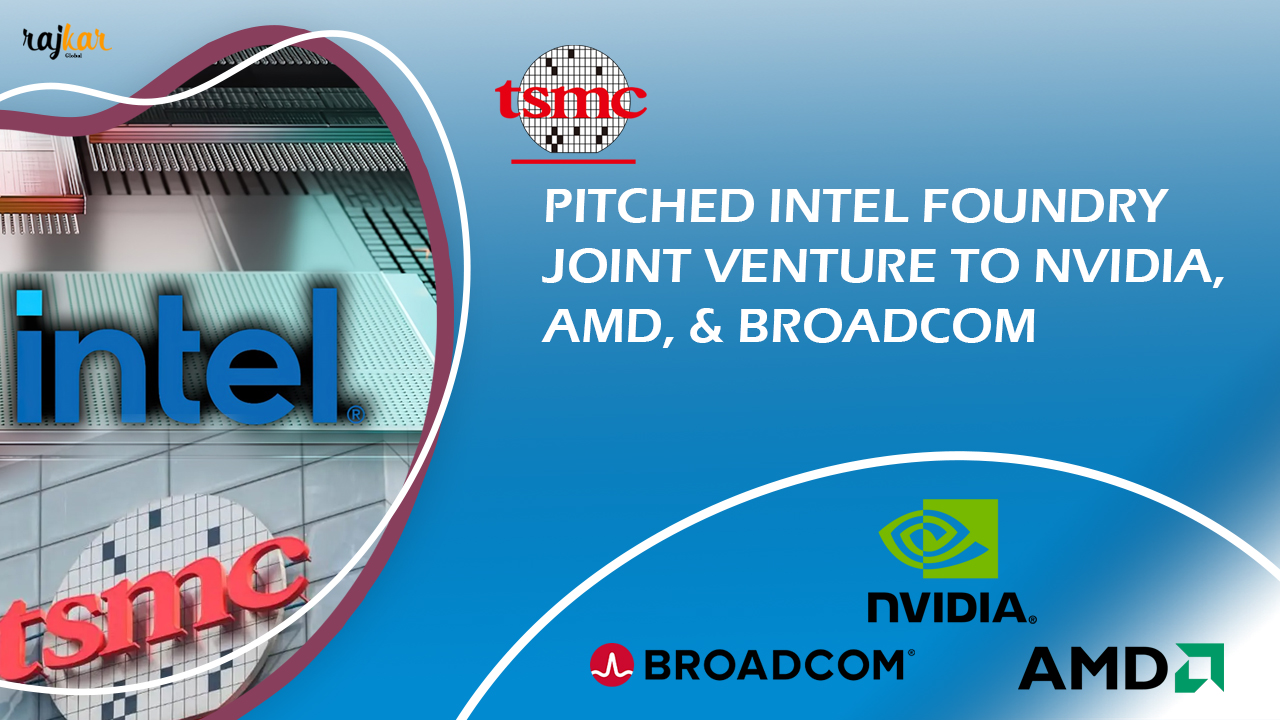Published:
March 13, 2025TSMC Pitched Intel Foundry Joint Venture to Nvidia, AMD, and Broadcom
In a move that could reshape the semiconductor industry, Taiwan Semiconductor Manufacturing Company (TSMC) has reportedly approached Nvidia, AMD, and Broadcom about forming a joint venture with Intel’s foundry business, according to sources familiar with the matter. This development highlights the ongoing shifts in the global chip manufacturing landscape as companies seek strategic partnerships to secure production capacity and reduce reliance on a single foundry provider.
A Strategic Partnership in the Making?
TSMC, the world’s largest contract chipmaker, has long been a dominant force in semiconductor fabrication, supplying cutting-edge chips to tech giants like Apple and Qualcomm. However, as demand for advanced semiconductor manufacturing continues to rise, TSMC appears to be exploring new avenues for collaboration, particularly with Intel, whose foundry ambitions have gained traction in recent years.
According to industry insiders, TSMC has proposed a potential joint venture that would involve Nvidia, AMD, and Broadcom—three major players in the semiconductor industry. The move could allow these companies to secure additional manufacturing capacity while also helping Intel expand its foundry business and compete more effectively with TSMC and Samsung.
Intel’s Foundry Push
Intel has been aggressively pursuing its foundry strategy as part of its broader IDM 2.0 initiative, which aims to position the company as a key player in contract manufacturing. With substantial investments in new fabrication facilities in the U.S. and Europe, Intel is seeking to establish itself as a viable alternative to TSMC and Samsung for companies requiring cutting-edge semiconductor manufacturing.
A joint venture with TSMC and other major chipmakers could significantly bolster Intel’s foundry credibility, enabling it to gain valuable partnerships while leveraging TSMC’s expertise in chip fabrication. Moreover, it would offer Nvidia, AMD, and Broadcom access to a diversified supply chain, reducing potential risks associated with geopolitical tensions and manufacturing bottlenecks.
What’s in it for Nvidia, AMD, and Broadcom?
For Nvidia, AMD, and Broadcom, partnering in such a venture could be a strategic move to ensure steady production of their high-performance chips. The global semiconductor supply chain has been under strain due to geopolitical uncertainties, supply chain disruptions, and increasing demand for advanced nodes.
- Nvidia: As a leader in GPUs and AI chips, securing additional fabrication capacity could help Nvidia maintain its competitive edge in an industry where demand for high-performance computing and AI solutions is rapidly growing.
- AMD: AMD has relied on TSMC for manufacturing its Ryzen and EPYC processors. A joint venture with Intel’s foundry business could provide AMD with more manufacturing options and reduce dependency on a single supplier.
- Broadcom: With a diverse semiconductor portfolio spanning networking, data centers, and telecommunications, Broadcom stands to benefit from a more resilient and diversified chip manufacturing ecosystem.
Challenges and Industry Implications
While the potential partnership offers significant benefits, it also presents challenges. Intel and TSMC have historically been competitors, and aligning their interests in a joint venture would require careful negotiation. Additionally, regulatory scrutiny and potential concerns over technological sharing and intellectual property could pose hurdles to the deal’s success.
If such a joint venture materializes, it could mark a major shift in the semiconductor industry, altering supply chain dynamics and fostering new competitive landscapes. The collaboration could help Intel gain traction in the foundry business while providing major chip designers with additional manufacturing options in an era of increasing demand and complexity in semiconductor production.
For now, discussions remain behind closed doors, and it remains to be seen whether the industry giants will reach an agreement. However, if successful, this partnership could reshape the semiconductor ecosystem, with lasting implications for chipmakers and tech companies worldwide.
